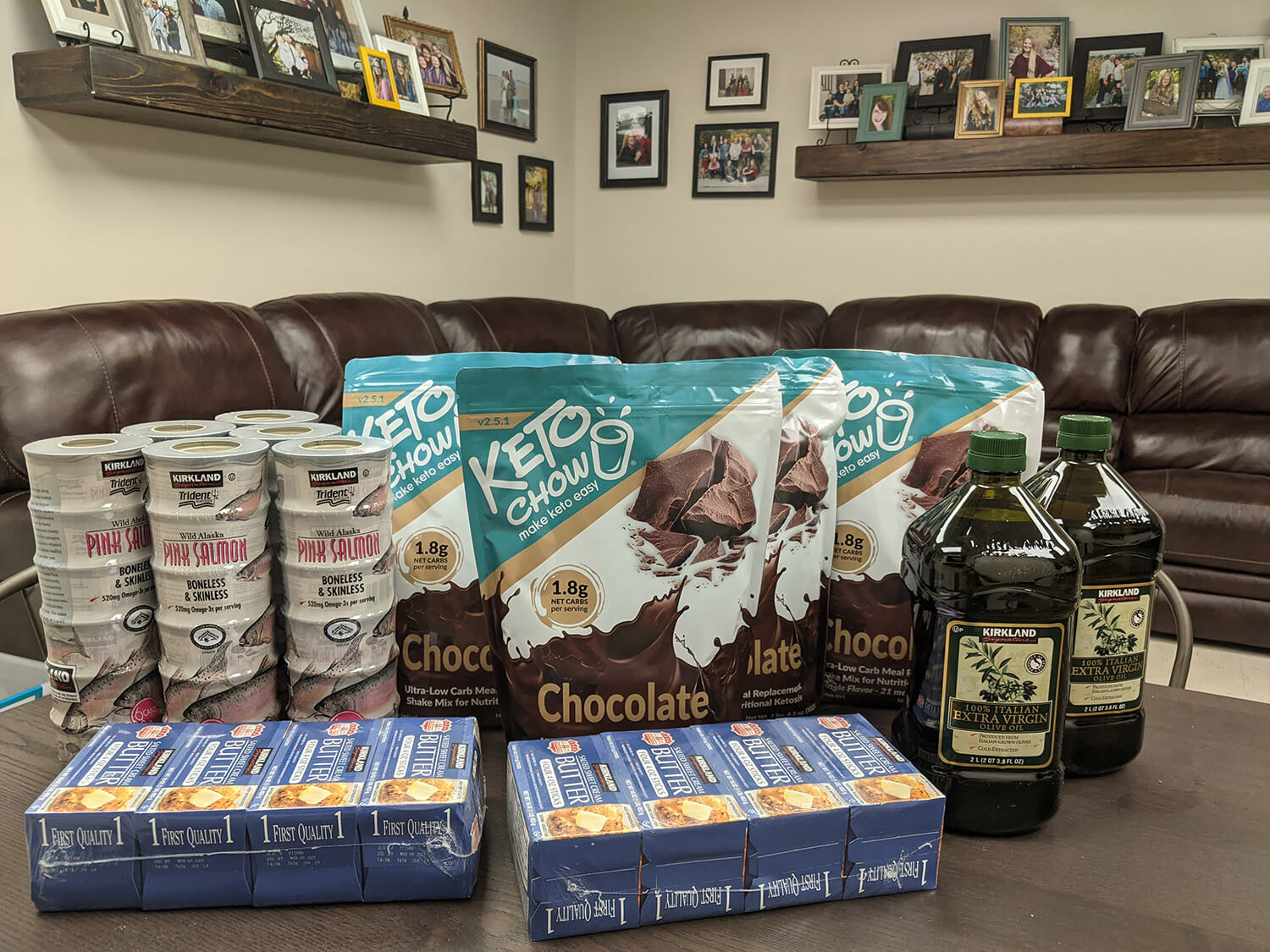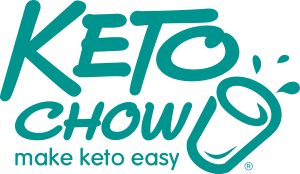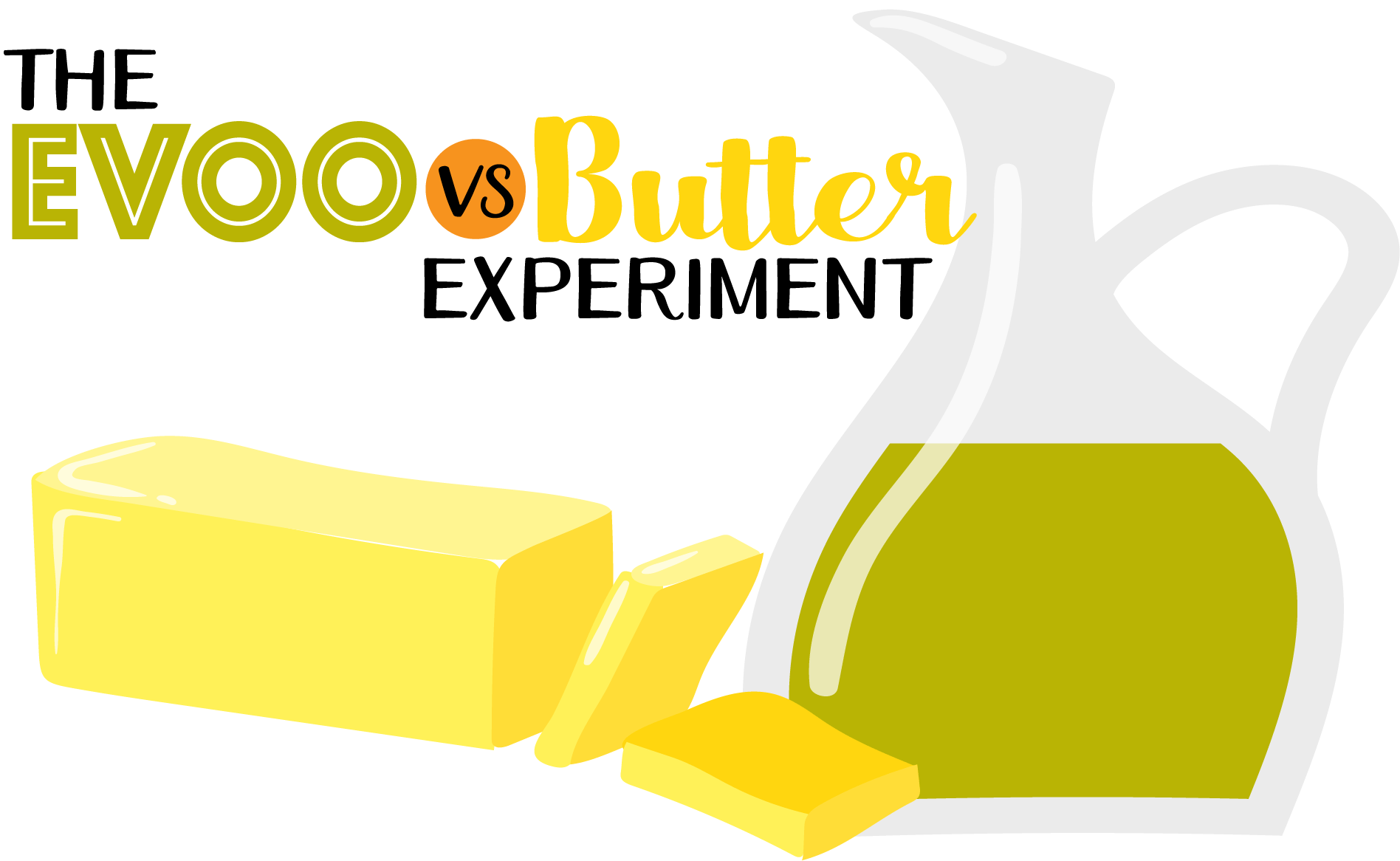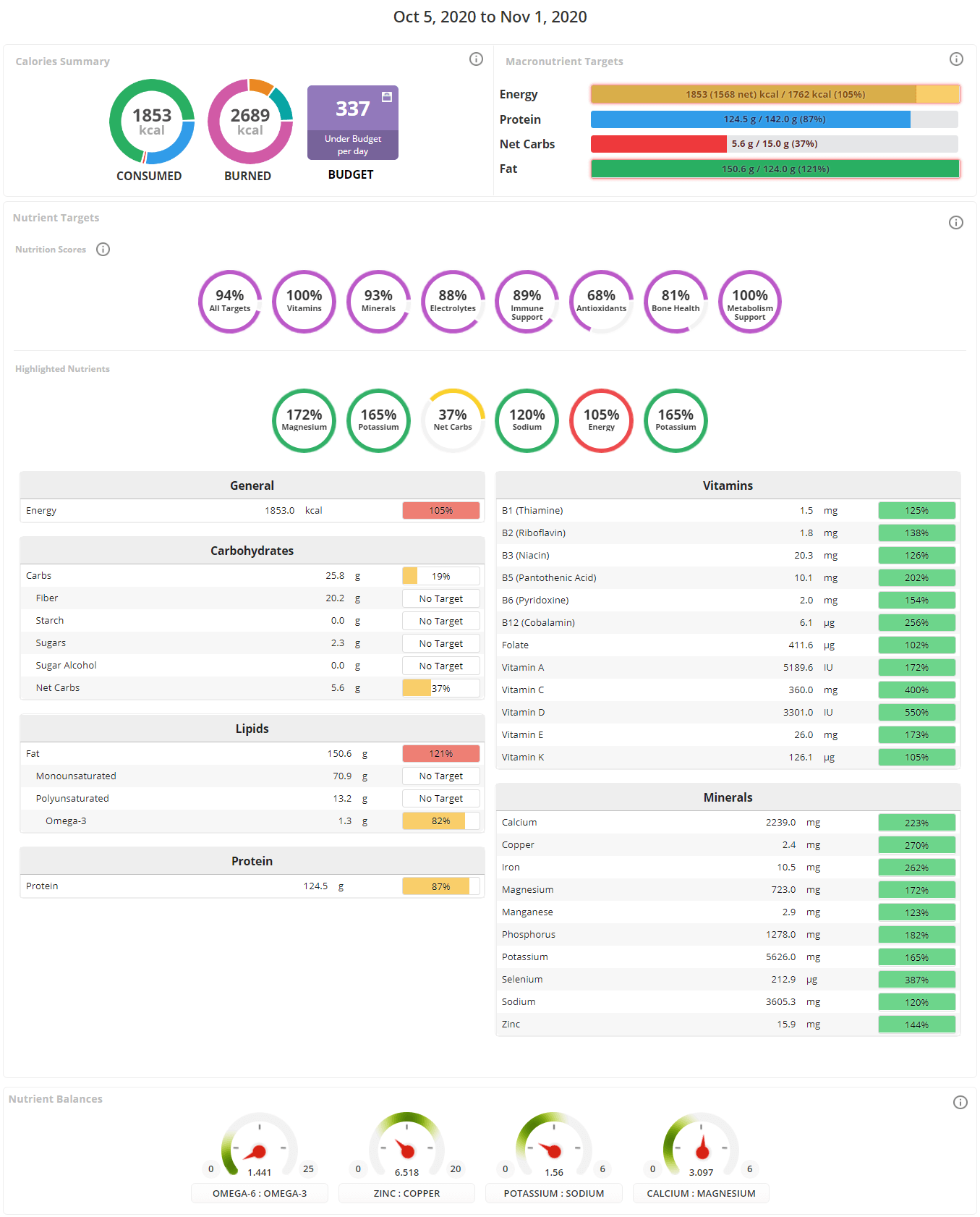Abstract
My friend Dave Feldman had planned to do an experiment where he did a 4-week study of the effects of Extra Virgin Olive Oil (EVOO) and Butter, with all other sources of calories consumed remained constant. “Planned” because he ran into some problems and stopped. This is something I’ve done multiple times in the past so I decided to take over from Dave and run with it (besides, the guy can only do so many experiments a year). I’ll quote from Dave here:
One of the most common suggestions in lowering cholesterol (both total and LDL) is “replace saturated fat with mono and polyunsaturated fat”. This advice appears to have lots of evidence behind it. I’ve both read many studies and heard many stories that back up this advice, although individual results can vary.
In particular, I regularly hear one should “replace butter with extra virgin olive oil” where they can. Given the enormous popularity of both these sources of fat, I decided to set up an experiment to test each in isolation — and it’s going to be a bit ambitious.
Personally, I would much prefer to use Avocado Oil or Light Tasting Olive Oil, both have a light flavor that isn’t super terrible. Extra Virgin Olive Oil, on the other hand, tends to have a rather strong flavor that’s going to be a bit difficult to get through for 21 consecutive meals (twice). I suspect it’s going to be a bit like when I did Macadamia Nut Oil back in 2019, tolerable but no fun. As Dave said, it’s important that it be extra virgin olive oil because that’s kind of the “go-to” when people take out butter and other saturated fats from their diet, and the additional compounds that are in the extra virgin olive oil will likely come into play as well.
Dave’s Endpoints of Interest
I’ll just go ahead and quote Dave for this:
As with the original design of this experiment I have outlined two categories of interest: lipid levels and inflammation markers. However, I’ll now be adding an additional test via Boston Heart that I’ve been waiting for — the Oxidized Phospholipids on apoB test (OxPL).
Something I’ve long speculated on is whether OxLDL would track tightly with OxPL. OxLDL is a pass/fail test — either the LDL particle has detectable levels of oxidation or it doesn’t. But the OxPL should show the degree of oxidation in those particles detected as an average for the total sampled. Thus, I think it will be an excellent test for risk and give us much more valuable information (but I do have some caveats, discussed below).
- Will EVOO interventions have lower relative total and LDL cholesterol levels (TC & LDL-C)?
- Will EVOO interventions have a greater oxidized LDL to total LDL particle count ratio (OxLDL/LDL-P)?
- Will EVOO interventions have a greater oxidized phospholipid to oxidized LDL particle ratio (OxPL/OxLDL)
Discussion
Quoting Dave again:
As mentioned above, there are many factors that can influence cholesterol levels, particularly LDL. There is one effect that is rarely discussed in the literature but is of particular interest to me — how much we see particular types of dietary fat result in higher or lower oxidation per LDL particle.
In other words, are we seeing lower levels of LDL cholesterol because LDL particles are getting oxidized and cleared by scavenger receptors at a higher rate? There are many limitations to the experiment in how well it can provide evidence to this answer, but it might open the door.
We can’t easily know the true rate of clearance for OxLDL in vivo, or how much this is impacted by the degree of oxidation per particle. However, oxidized LDL particles are commonly understood to be cleared at a higher rate than unmodified LDL. So it will be meaningful data if we find a higher OxPL to OxLDL ratio in one intervention over the other.
Regardless, there will be quite a bit more data from all the other blood markers to provide comparisons that go well beyond lipids.
Experiment Methodology
The Experiment was what’s called a “double crossover” – meaning that I went back and forth TWICE modulating the variable (butter vs EVOO) each time. A “crossover experiment” is where the people doing the experiment do both phases, typically they do the placebo/control and the intervention. By doing this you can see if the effects of the changes are from a participant’s personal idiosyncrasies or if the change is really having an effect. By doing the crossover twice, it allows control for a bunch of variables and will show if the effects of one fat are repeatable the second time, clarifying the effects. The only better way to do the experiment would be to wait a few months and repeat the experiment in the opposite order to further rule out the possibility of the order changing the results. I’m not going to do that, so don’t ask.
During the experiment, I worked to keep all other variables as equivalent as possible throughout: eating times, exercise times/duration, and sleep schedule. For the Extra Virgin Olive Oil (EVOO) I used Kirkland Signature Extra Virgin Italian Olive Oil. There is some VERY heated discussion about the authenticity and purity of Olive Oils, this particular product appears to be authentic and pure, it also is readily available for anyone else that is crazy enough to repeat this experiment. For the butter, I used standard plain Kirkland Salted Butter. I didn’t use “grass-fed” Kerigold or other fancy butter because the metabolic difference is negligible and I’m not buying into the narrative that beef and butter are only OK if they are “grass-fed” – if you want to have a discussion about the merits of “grass-fed” vs. conventional, please contact Dr. Peter Ballerstedt.
My daily diet during the experiment consisted entirely of:
- 3 servings of Keto Chow – I used the plain Chocolate Flavor for all 84 meals during the experiment
- 1 can per day of Kirkland Wild Alaskan Pink Salmon – to add additional protein and give 1080mg of omega 3, plus something to chew =)
- Water and Keto Chow Electrolyte Drops consumed ad libitum
- 155ml of EVOO or 175g of Butter, during their respective phases of the experiment
- 20g per day of Beef Gelatin to add protein and help with digestion

Schedule Outline
- October 5: Baseline blood test.
- October 5-11 Extra Virgin Olive Oil
- October 12: Blood Test 2
- October 12-18 Butter
- October 19: Blood Test 3
- October 19-25 EVOO
- October 26: Blood Test 4
- October 26-November 1: Butter
- November 2: Blood Test 5
Blood and other tests
I checked blood ketones and glucose daily for the length of the experiment (except when I forgot), I also collected glucose readings using the FreeStyle Libre system. Based on the design that Dave concocted, I had the following blood tests done weekly by LabCorp:
- Apolipoprotein A-1
- Apolipoprotein B
- C-Reactive Protein
- Complete Blood Count (CBC)
- Comprehensive Metabolic Panel (CMP)
- Cortisol
- Fatty Acids, Free (NEFA)
- Ferritin, Serum
- Fructosamine
- GGT
- Glucagon, Plasma
- GlycA
- Hemoglobin A1c
- IGF-1
- Insulin and C-Peptide
- Leptin
- Lipid Panel
- Lipoprotein(a)
- Lp-PLA2 Activity
- Nuclear Magnetic Resonance (NMR)
- Oxidized Low-density Lipoprotein (OxLDL)
- Reverse T3
- Testosterone, Serum
- Thyroid Panel
- Uric Acid, Serum
- Vitamin B12 and Folate
- Vitamin D, 25-Hydroxy
I also went through the extra hassle to get some additional tests from Boston Heart Diagnostics as well. These include:
- Adiponectin
- Cholesterol Balance
- Fatty Acid Balance
- HDL Map
- Interluekin-6
- another Leptin
- Oxidized Phospholipids on apoB (OxPL)
- hs-CRP
- another Comprehensive Metabolic Panel
- Free T3
- Free T4
- Total T3
- Total T4
- Hepatic Function Panel
- Renal Function Panel
Food Logs and Nutrient Analytics
One of the main criticisms of Morgan Spurlock’s “Supersize Me” is that he absolutely refuses to release his food logs. You can’t take an experiment, even an N=1 experiment, seriously unless you can look at the data. Here are my own food logs for the entire experiment: Cronometer Full Nutrition Report (includes daily food logs and analysis) The data was collected using Cron-O-Meter.
Measurements
Test Results (Blood and others)
All of the result data have been entered into my running spreadsheet that contains ALL my blood test results from all the experiments I have done (you have to scroll pretty far over to the right, these new results are on AE).
- October 5, 2020 Labcorp | Boston Heart
- October 12, 2020 Labcorp | Boston Heart
- October 19, 2020 Labcorp | Boston Heart
- October 26, 2020 Labcorp | Boston Heart
- November 2, 2020 Labcorp | Boston Heart
- Continuous Glucose Monitor (Freestyle Libre) data for experiment period
Results and Conclusion
Until a proper write-up is complete, we were able to get Dave and Siobhan to record a video analyzing the results and talking about the next steps.
And here is a discussion about the second round of experiments.









